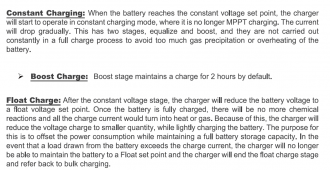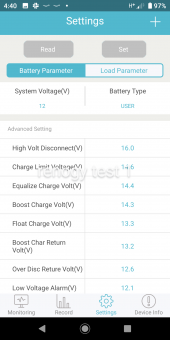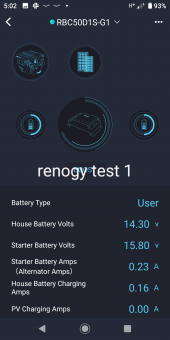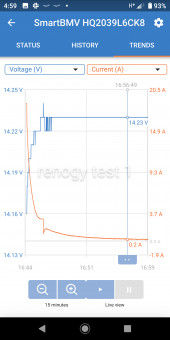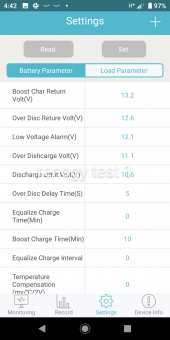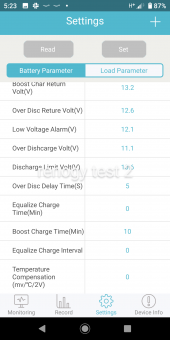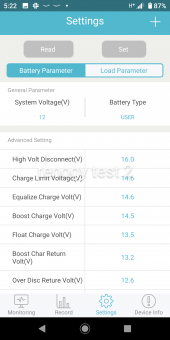Still the same problem with perpetual boost mode. Just came back from some more fiddling with the settings, using the BT-2 app. I'm gradually turning down the boost voltage to see what happens. I want to get to the point where it stops charging at 95%. The general rule is that you should not let the batteries sit at 100% charge for long time, so if I can get the charger to not charge all the way up, that may be an acceptable alternative to full charge, then float.
About the green light: yes, I've seen some strangeness with that, too, but eventually after a while it does show yellow (normal). I don't really care too much about the light so long as the charging works. Right now it doesn't.
I also posted about this on the Renogy forum (you need to get a login to see the responses). Got some configuration suggestions back with one guy claiming it works for him and several giving promising, but ultimately unsuccessful help.





